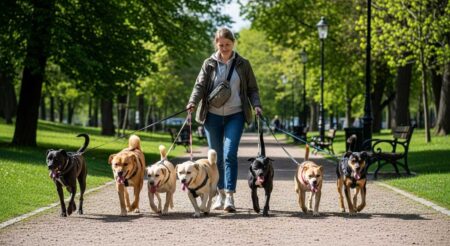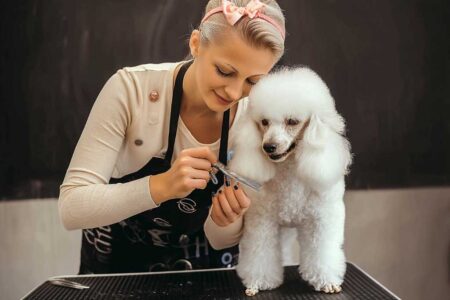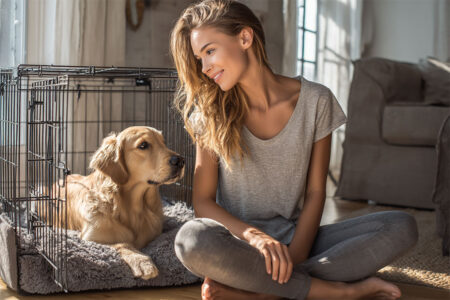As a pet parent, ensuring your dog’s comfort and safety is a top priority. Dog collars and harnesses are essential equipment for your dog’s daily activities, whether for walks, training, or just a simple outing. But like any gear, these accessories need proper care and maintenance to keep them functional and in good condition. From choosing the right materials to cleaning and repairing them, this comprehensive guide will walk you through the best practices for caring for your dog’s collars and harnesses.
Why Proper Care for Dog Collars and Dog Harnesses Matters
Dog collars and dog harnesses are not just fashion statements,they serve vital purposes. Collars hold your dog’s identification tags, which can help you recover them if they get lost. At the same time, harnesses provide more control and comfort, particularly for dogs with respiratory issues or that pull. But with regular use, both collars and harnesses can wear down, affecting their performance and safety.
Maintaining these important accessories ensures they last longer, remain functional, and keep your dog comfortable while wearing them. Plus, caring for your dog’s gear helps avoid potential issues like skin irritation, collar tightness, and discomfort.
Choosing the Right Dog Collar and Harness Materials
Before we dive into the care and maintenance details, it’s important to understand the materials your dog collar and harness are made from. Different materials require different types of care, so knowing what you’re working with can make the process easier.
Leather Collars and Harnesses
Leather is a classic material that offers durability and comfort. It’s often chosen for its stylish appearance and long-lasting nature. However, leather requires special care to prevent it from cracking or drying out.
Nylon Collars and Harnesses
Nylon is a popular material for both dog collars and harnesses. It’s lightweight, durable, and easy to clean. Nylon gear often comes in various colors and designs, making it a great choice for stylish pups. Nylon collars and harnesses are also affordable and can withstand much wear and tear.
Neoprene and Padded Collars and Harnesses
Neoprene is often used for padded collars and harnesses. It’s soft on your dog’s skin and great for preventing chafing, especially for dogs with sensitive skin. This material is also water-resistant, which makes it ideal for dogs that love the water.
Reflective Collars and Harnesses
Reflective collars and harnesses are designed with safety in mind. These are perfect for evening walks or for dogs that are frequently outdoors. The reflective material helps improve visibility, which can be especially useful in low-light conditions.
Cleaning Your Dog Collars and Dog Harnesses
No matter the material, regular cleaning is essential for maintaining your dog’s collars and harnesses. Cleaning removes dirt, sweat, and bacteria, preventing odor buildup and ensuring the gear remains comfortable for your dog.
Step-by-Step Guide for Cleaning Dog Collars
- Remove the ID Tags and Attachments: Always remove your dog’s ID tags, leash, or other attachments before cleaning the collar. This prevents damage to the tags or other gear.
- Hand Wash or Machine Wash?
- Leather Collars: Leather collars should never be machine-washed. Instead, wipe them down with a damp cloth to remove dirt. Use a leather cleaner or a gentle soap solution for tougher grime. After cleaning, apply leather conditioner to prevent the leather from drying out.
- Nylon Collars: Nylon collars can generally be machine-washed. Place the collar in a laundry bag to prevent tangling, and use a mild detergent on a gentle cycle. If hand washing, use warm water and a mild soap solution, scrubbing with a soft brush or cloth.
- Neoprene and Padded Collars: These materials can be machine-washed. However, check the care label first. If washing the machine, use a gentle cycle and air dry.
- Drying Your Collars: Air drying is the best method. Hang the collar in a well-ventilated area and let it dry completely before reattaching the tags or putting it back on your dog. Avoid high heat (like a dryer) as it can damage the materials.
Cleaning Dog Harnesses
- Remove Extra Items: As with collars, remove any tags, ID tags, or extra clips before cleaning your dog’s harness.
- Hand Wash or Machine Wash?
- Leather Harnesses: Leather harnesses need to be treated with extra care. Wipe down the harness with a damp cloth, avoiding soaking it in water. After cleaning, apply a leather conditioner to keep the material supple.
- Nylon Harnesses: Like nylon collars, these harnesses can be machine-washed on a gentle cycle or hand-washed with mild soap and warm water. Always check the manufacturer’s care instructions to ensure proper washing.
- Neoprene or Padded Harnesses: If machine-washable, wash these on a gentle cycle with a mild detergent. Hand washing is also an option. Air dry them to maintain their structure and prevent shrinking.
- Drying Your Harness: Avoid high heat sources when drying harnesses. Always let them air dry to maintain the integrity of the materials. It’s best to avoid drying neoprene or padded harnesses in direct sunlight as this can cause fading.
Maintaining the Durability of Your Dog’s Collars and Harnesses
Caring for your dog’s collars and harnesses isn’t just about cleaning them. Proper maintenance ensures they last for as long as possible and remain functional. Here are some important maintenance tips:
Regularly Check for Wear and Tear
Inspect your dog’s collar and harness regularly for signs of damage. Look for:
- Fraying, stretching, or cracking, particularly in nylon collars or harnesses.
- Stiffness or discoloration in leather collars.
- Broken clips or buckles, especially in harnesses.
- Worn-out reflective material or stitching.
If you notice any damage, it’s time to replace the accessory. A damaged collar or harness can be unsafe for your dog, potentially leading to discomfort or even injury.
Avoid over-tightening Collars and Harnesses
An ill-fitting collar or harness can cause discomfort, chafing, or even injury to your dog. When using a collar, ensure it’s snug but not tight, with enough space to fit two fingers comfortably between the collar and your dog’s neck. For harnesses, make sure the straps are adjusted so that the harness fits securely but doesn’t restrict movement.
Store Collars and Harnesses Properly
Store your dog’s gear in a cool, dry place when it isn’t in use. Avoid leaving collars or harnesses in direct sunlight, as UV rays can break down materials like nylon and leather over time. Keep them out of areas where they could get tangled or exposed to moisture.
Repairing Dog Collars and Dog Harnesses
Even with proper care, dog collars and harnesses can sometimes need a little repair. Fortunately, many minor issues can be fixed at home, saving you from replacing the entire accessory.
Fixing a Broken Dog Collar
If your dog’s collar buckle has come loose or the stitching has come undone, you can often fix it with a bit of sewing or using a replacement buckle. Here’s how:
- Broken Buckle: Remove the broken buckle and replace it with a new one. You can buy a replacement buckle at most pet stores or online.
- Loose Stitching: Use a needle and heavy-duty thread to re-stitch loose seams. Tie off the ends securely.
Fixing a Dog Harness
Harnesses can sometimes lose their structure or break at the seams. If this happens:
- Broken Straps: If a strap has broken or is fraying, you can try to sew it back together or replace it entirely. Use strong, durable fabric that matches the original harness material.
- Difficult Buckles: If the buckle is stuck or won’t close properly, check for dirt or debris that may be blocking it. Clean the buckle and try again. If it’s still not functioning, replace it.
Conclusion: Keeping Your Dog Comfortable and Safe
Your dog’s collar and harness are more than just accessories,they’re essential tools that keep your dog safe, secure, and comfortable. Following the steps outlined above, you can ensure that these items last long, providing your dog with the best possible experience. From regular cleaning to repairing minor issues, maintaining your dog’s gear doesn’t have to be difficult. With just a little time and effort, you can keep your dog’s collars and harnesses in top shape, ready for any adventure that comes your way.
By giving your dog the best, you’re investing in its comfort and ensuring its safety. So, take the time to care for and maintain your dog’s collars and harnesses,your dog will thank you for it!






